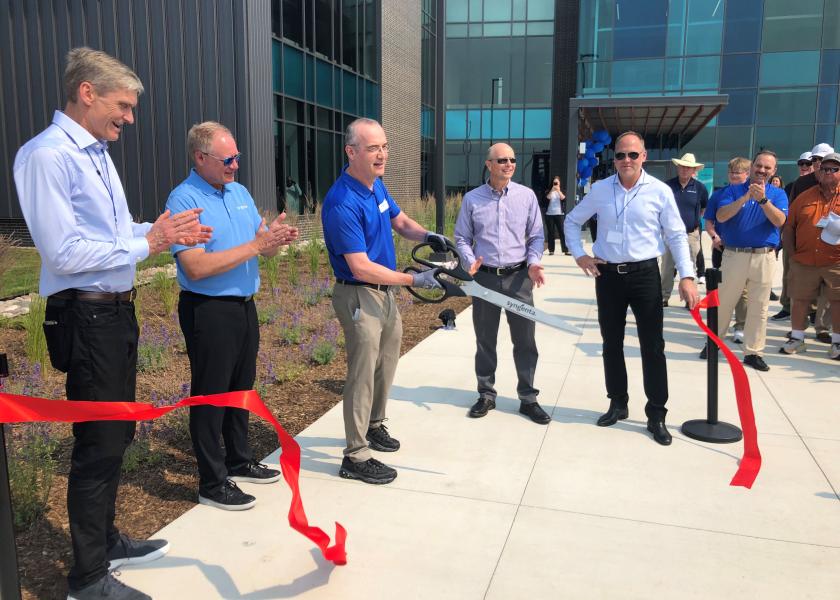Syngenta Unveils New Seeds Research-and-Development Innovation Center

Syngenta officials like to say genetic gain for U.S. farmers is underway in its global seed genetics research and development facilities 365 days a year.
It’s not just talk. This June, the company unveiled an 88-acre, 100,000-square foot Seeds Research & Development Innovation Center in Malta, Ill., roughly an hour west of Chicago. The Center is the latest addition to Syngenta’s stable of 150-plus similar facilities based around the world.
“This facility allows us to demonstrate new technology in the environment in which we’re going to deploy our products,” said Judd Maxwell, corn product placement lead. He added that new seed hybrids and varieties can take upwards of 15 years to develop and introduce to farmers’ fields. He expects the new facility will help Syngenta shorten that timeframe.

“We want to make sure that growers can touch and feel and see the research and development innovation that we're doing,” Kruger said, during the event. “So, we’re going to work together, we're going to invite farmers here to have a seat at the innovation table.”
With the new facility, Syngenta officials say they will be able to transform the development and placement of corn hybrids, soybean varieties and other seed products through farmer and industry partner collaborations. Some of the research now underway at the facility is focused on improving germplasm performance, launching stacked, next-generation differentiated traits and demonstrating regenerative agriculture cropping systems.
“One of the key things about Malta is it enables us to take the discovery work we do in Research Triangle Park (RTP) in North Carolina, and scale that up for our biotechnology pipeline, so we can translate those lab results into field results and promote the best traits, the best technology to give to the grower,” said Charles Baxter, global head of regulatory and product safety.
Syngenta’s U.S. research and development headquarters are based in RTP. The company also has a trait introgression facility in Napa, Idaho, which it opened in 2019.
Maxwell added that the new Malta facility isn’t the end of the company’s investment in North America. “It's just another key milestone in our in our journey,” he said.
The New Art of Hybrid Selection to Overcome Field Stresses
Do Pretty Corn Fields Actually Translate Into Higher Yields?
Is the Weather Or Your Hybrid Management to Blame This Season?







